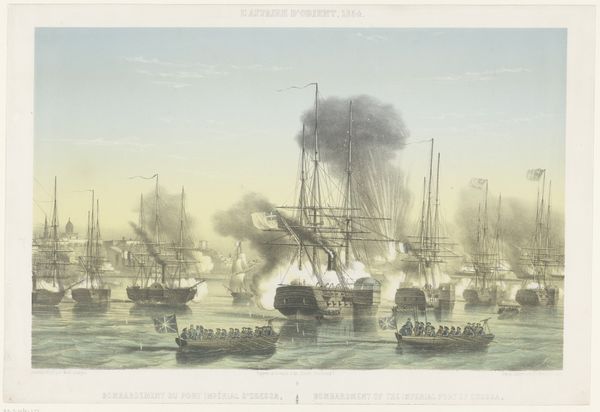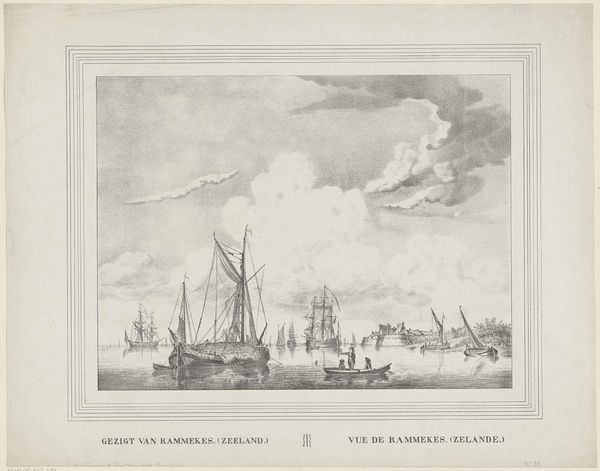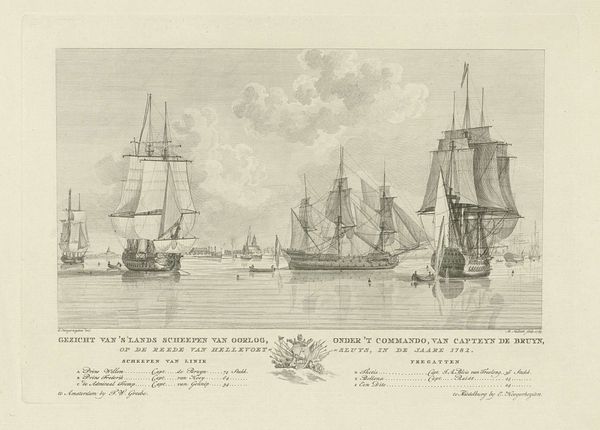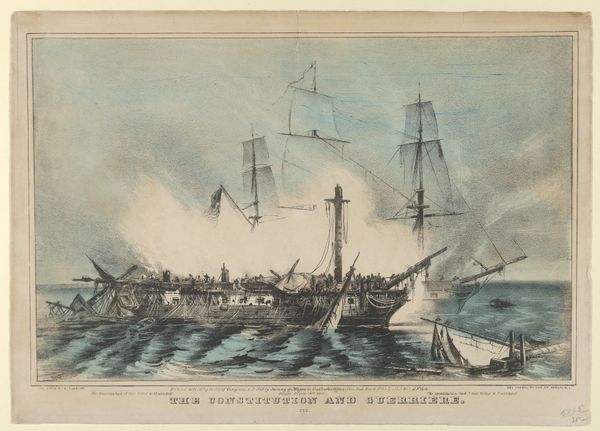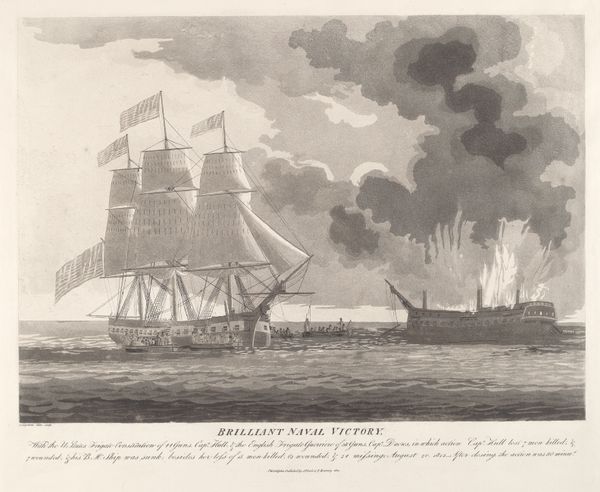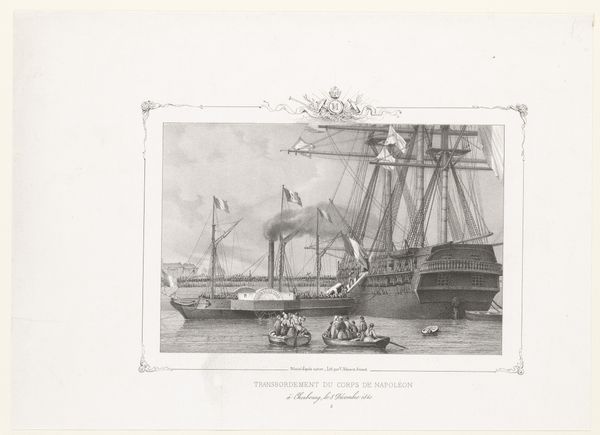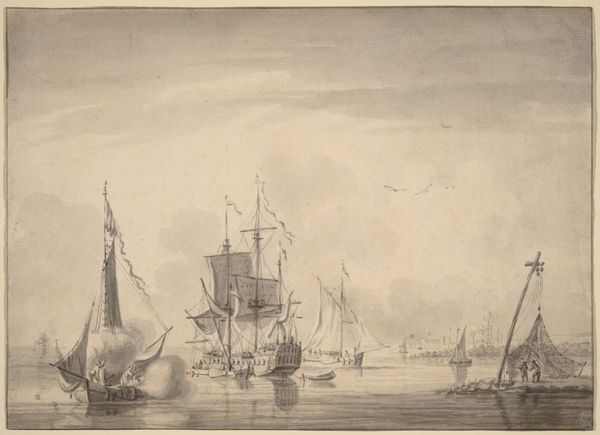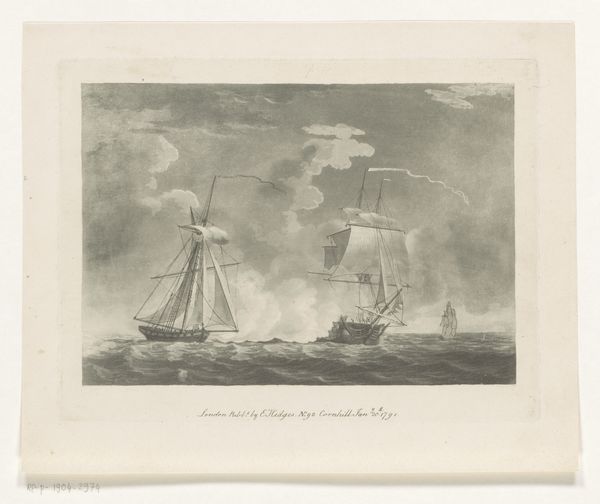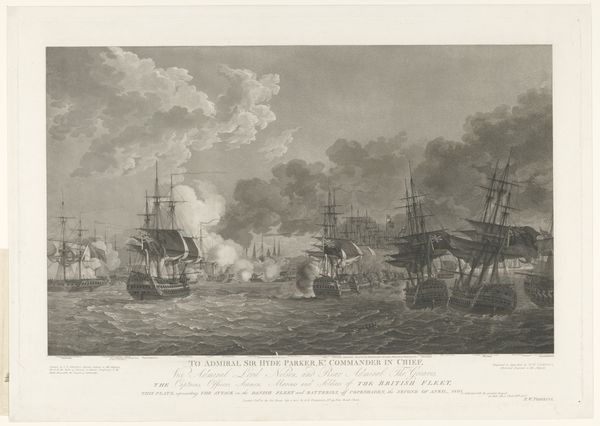
Dimensions: height 360 mm, width 630 mm
Copyright: Rijks Museum: Open Domain
Editor: So, this engraving is titled "Arrival of Queen Victoria in Cherbourg, 1858." It seems to be a print commemorating a historical event. All the ships, the billowing smoke – it's quite dramatic, almost propagandistic. What can you tell me about this piece from a historical perspective? Curator: It's a fascinating record of Anglo-French relations. These types of engravings served as visual news, circulated widely to shape public opinion. Consider the date – 1858. Just a few years after the Crimean War where Britain and France were allies. How do you think images like this played a role in solidifying that alliance and potentially downplaying past conflicts? Editor: That's a great point. I hadn’t considered its role in public diplomacy. I guess it's not just about recording the event but crafting a particular narrative. Was Cherbourg a strategically significant location for this meeting? Curator: Absolutely. Cherbourg was a major naval port, and the meeting symbolized a strategic partnership. Think about the function of grand displays, then and now. Who is this image intended to impress: domestic or international audiences? What’s gained by demonstrating naval power alongside a show of diplomatic harmony? Editor: I see – it’s about power projection as much as friendship. It seems the visual language speaks of partnership, while the underlying message reinforces their combined strength. It’s interesting to think about how seemingly straightforward depictions can be so loaded with political meaning. I’ll never look at historical engravings the same way. Curator: Precisely. It shows the potent ability of art to operate within—and shape—political realities. Always consider what a piece is *doing*, and for whom.
Comments
No comments
Be the first to comment and join the conversation on the ultimate creative platform.

